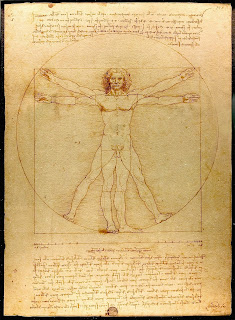Venetian administrative court recently rejected the appeal filed by Italia Nostra, an Italian cultural heritage conservation group, opposing the loan of Leonardo da Vinci's 'Vitruvian Man' to Louvre museum. The loan was part of a bilateral agreement signed in September by Italy and France according to which Italy should lend seven Leonardo's works to France and, in return, the latter will send some Raphael's paintings next year to be exhibited at Scuderie del Quirinale in Rome to commemorate 500 years since Raphael's death.
 |
| Leonardo da Vinci's 'Vitruvian Man', 1492 |
As a precautionary measure, the Court suspended the loan and even the bilateral agreement signed between Italy and France.
On October 16, the Court overturned its previous decision rejecting the appeal, observing that other works among the Venice Galleries' masterpieces were already lent in the past. Moreover, the two Italian most important restoration institutes confirmed that the drawing could be exhibited for a limited period of time if under the correct lighting.
On October 16, the Court overturned its previous decision rejecting the appeal, observing that other works among the Venice Galleries' masterpieces were already lent in the past. Moreover, the two Italian most important restoration institutes confirmed that the drawing could be exhibited for a limited period of time if under the correct lighting.
The 'Vitruvian Man' will then be displayed during the exhibition starting at Louvre on October 24, celebrating the 500th anniversary of Leonardo's death. Italian media reported also that this masterpiece will be insured for little less than 1 billion euro. The drawing, which shall be shown for a few weeks every six years, will not be exhibited for a long time after being displayed twice this year: one time in Venice and now at Louvre.
While this dispute seems solved (unless Italia Nostra decides to appeal), one member of the Uffizi Galleries' scientific committee, Tomaso Montanari, have recently claimed that two Leonardo's paintings - "Study of the Landscape" and "The Adoration of the Magi" - were exported for the same exhibition despite being on Uffizi's list of unmovable works.
Italia Nostra's appeal highlighted the problems concerning the loan of masterpieces, besides two different visions of cultural heritage: as a national treasure or as a part of a world cultural heritage to share.
No comments:
Post a Comment